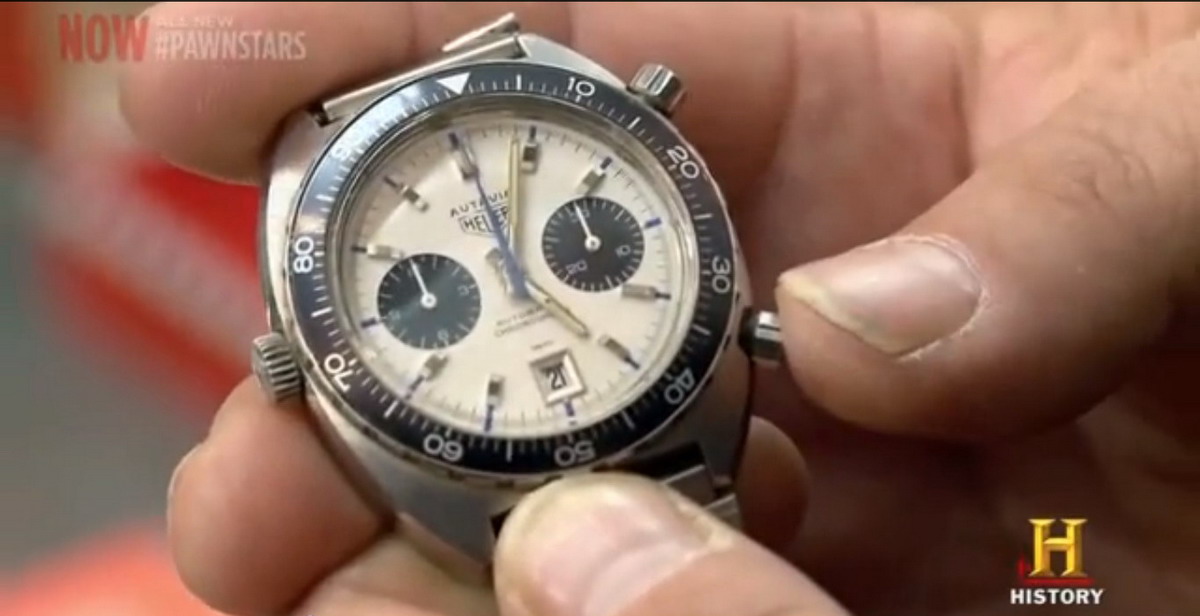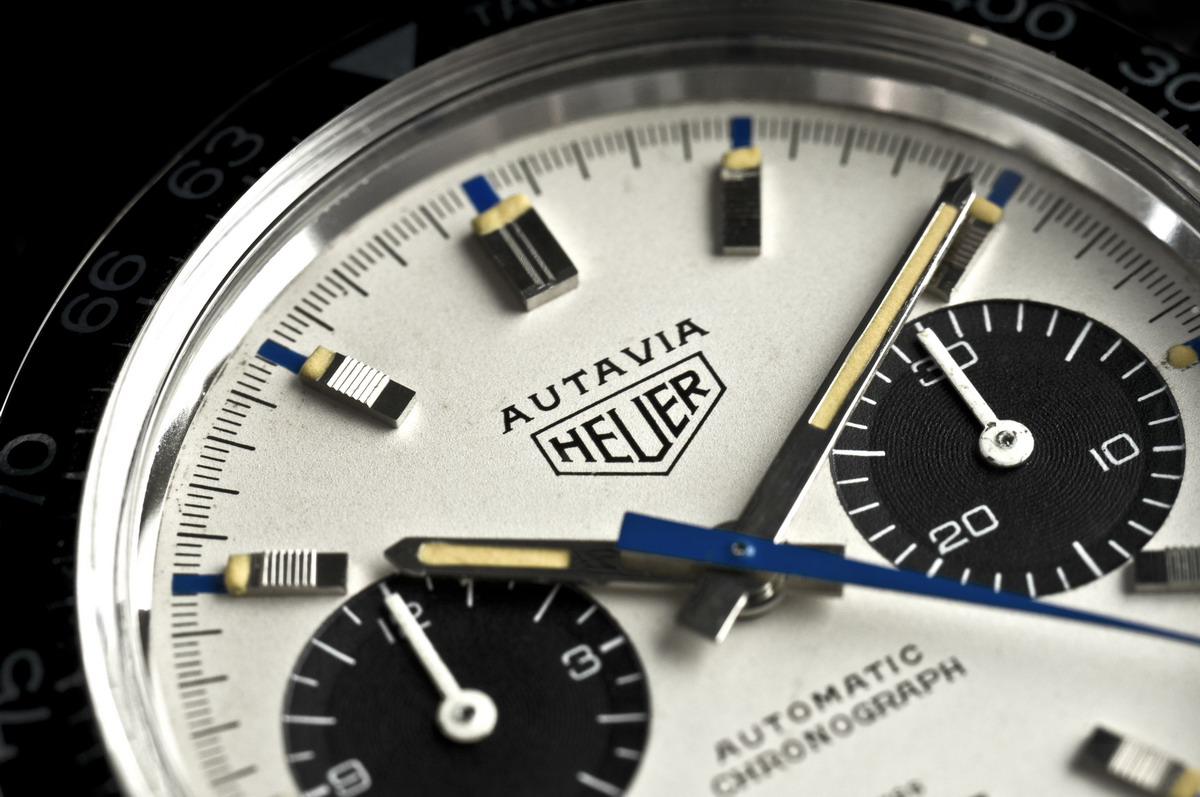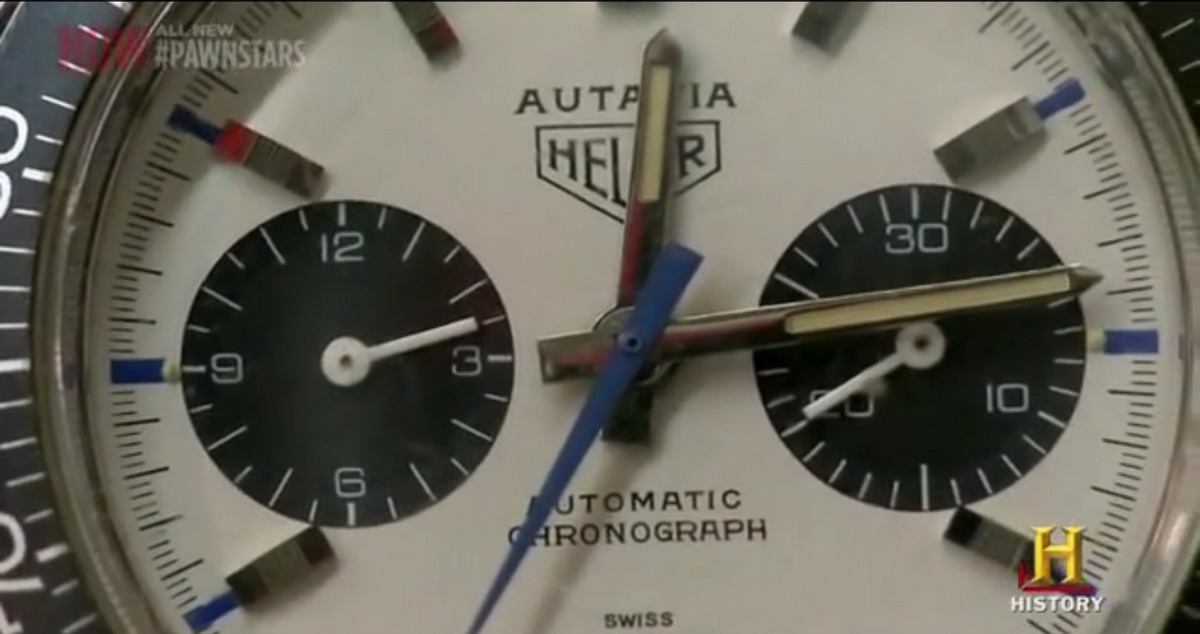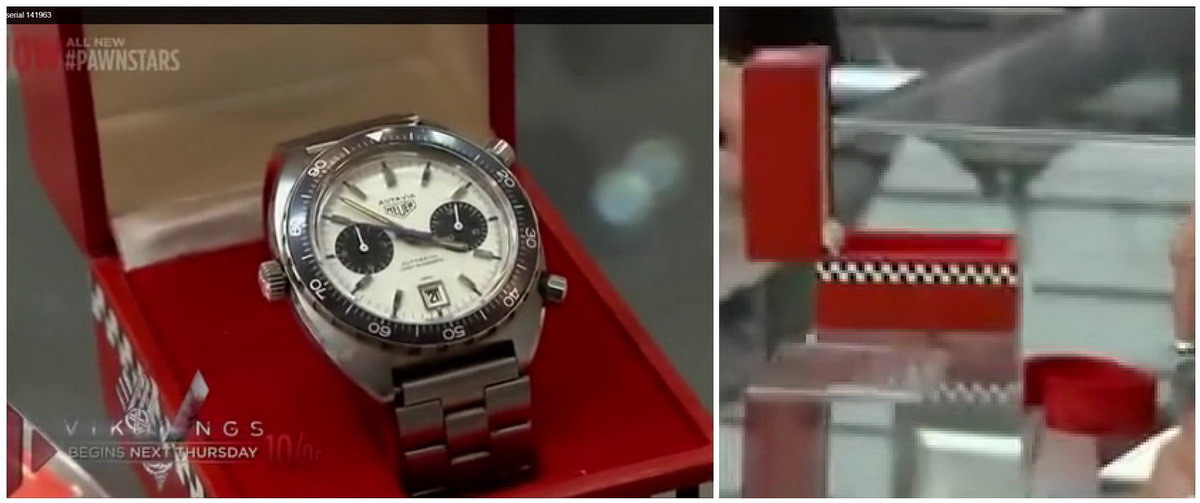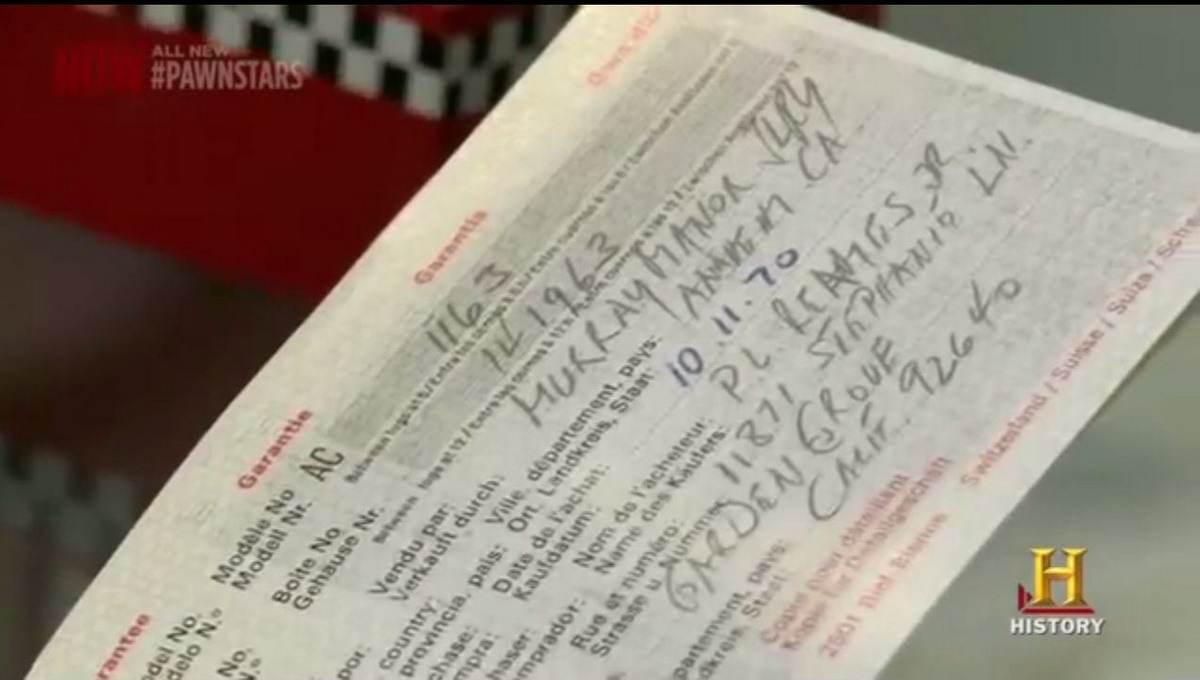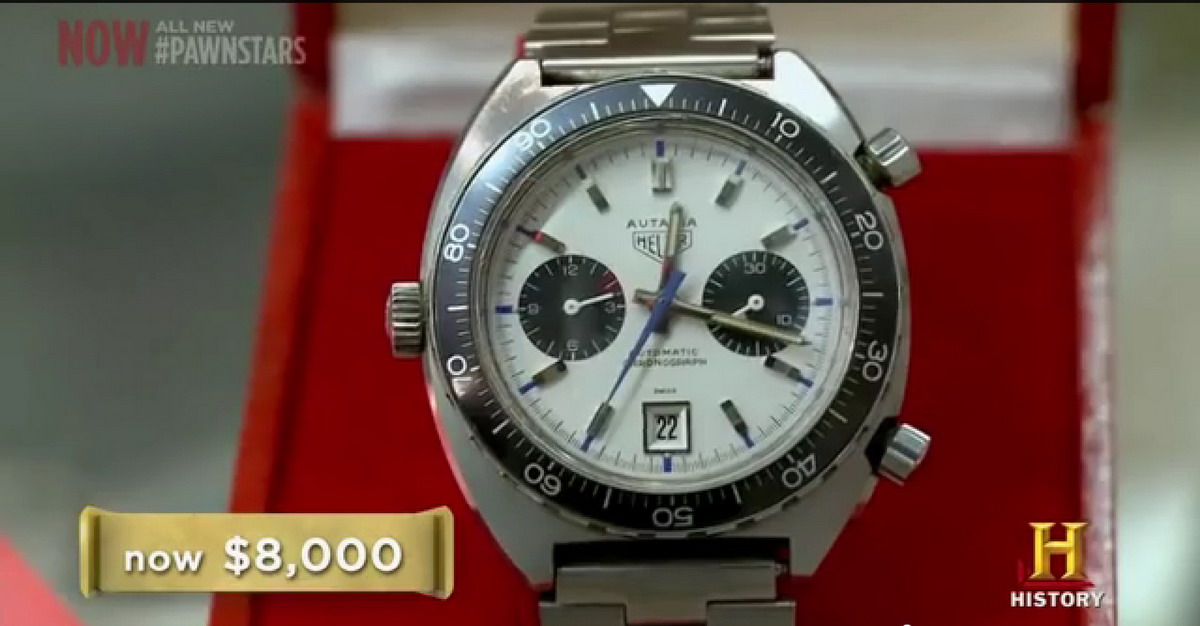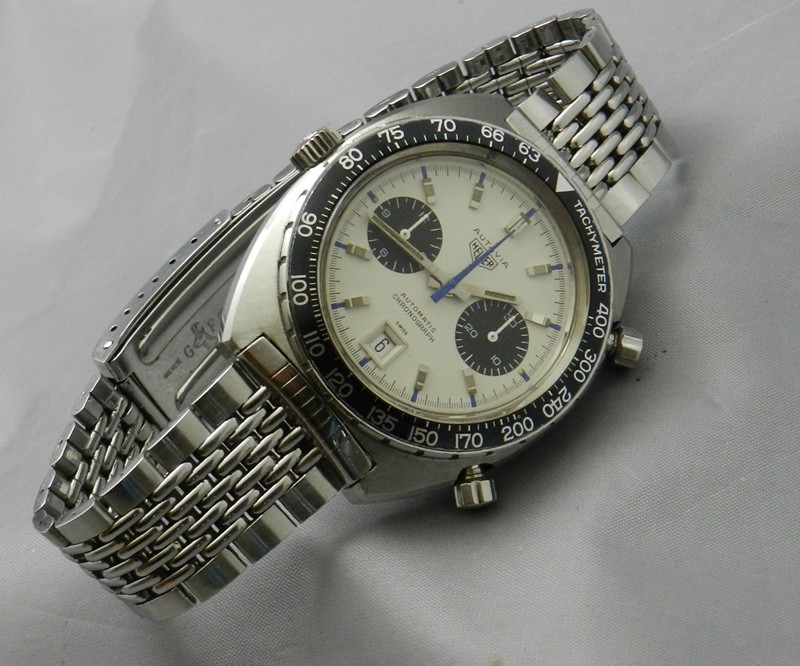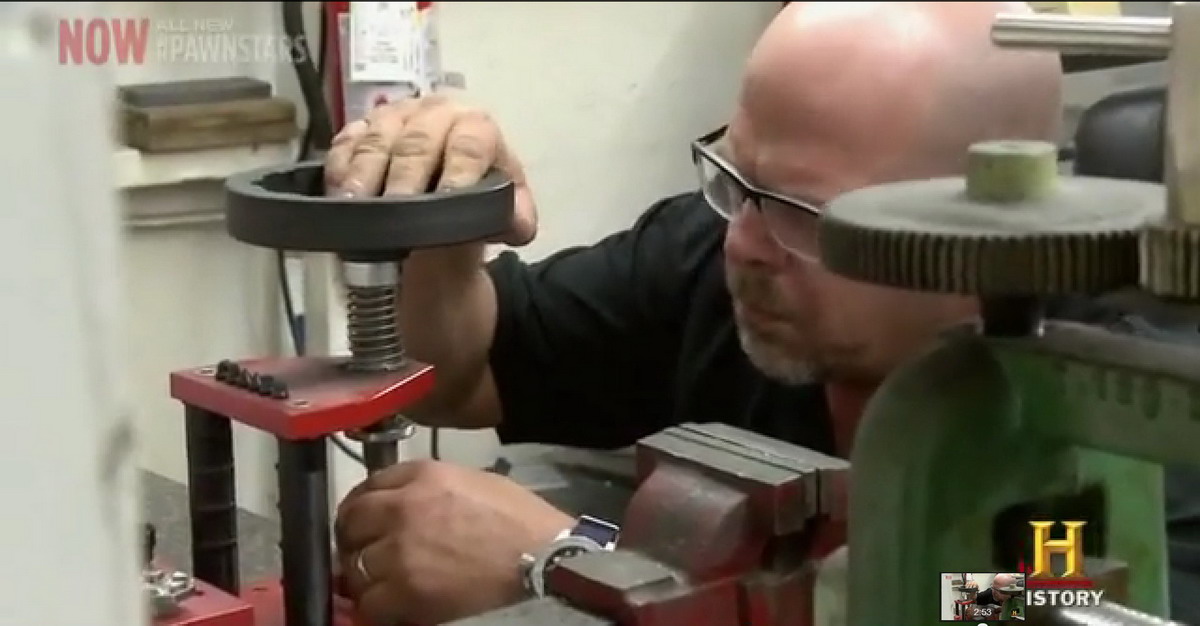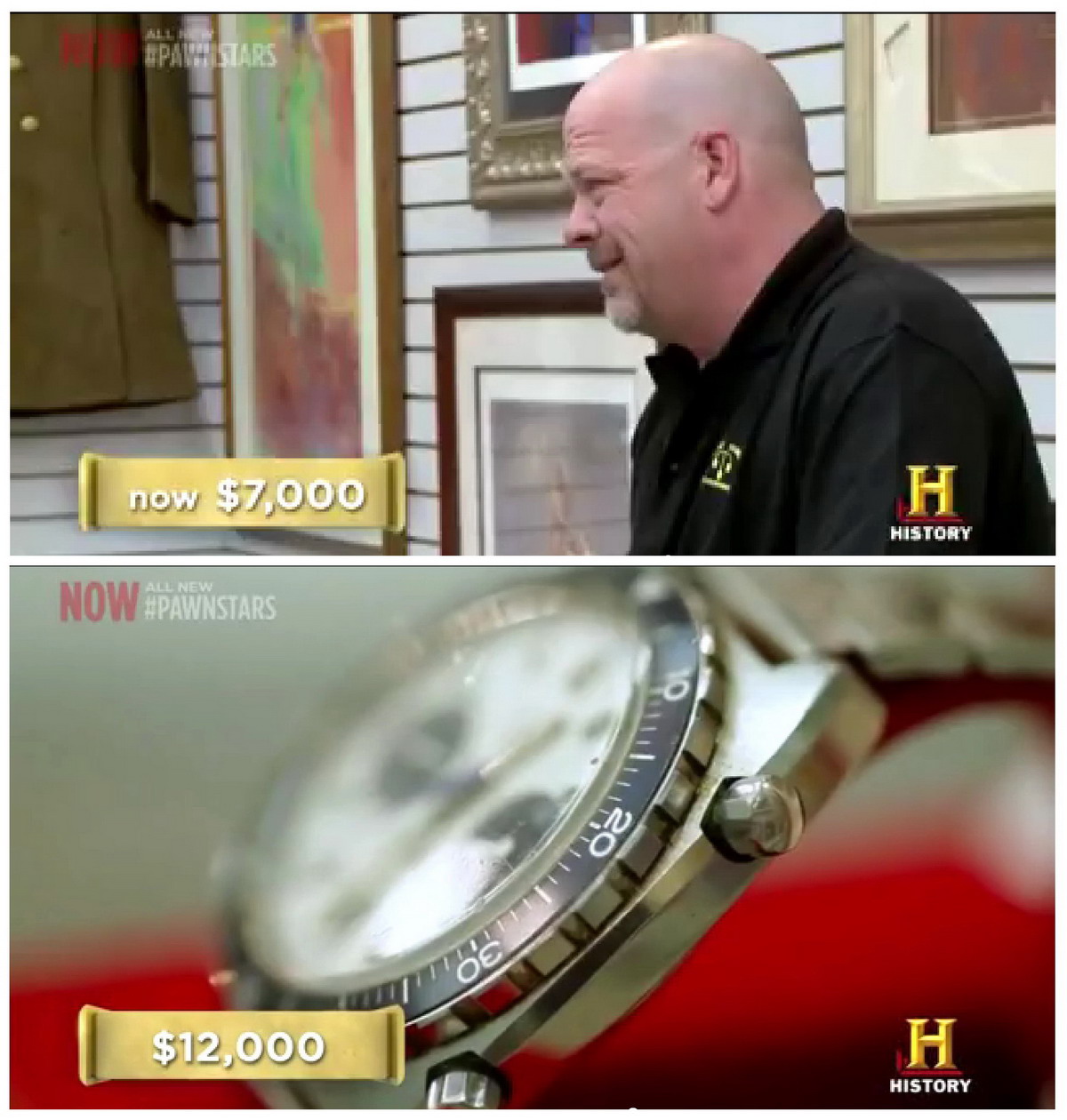Pawn Stars is an American “reality” television show that presents events occurring at the World Famous Gold & Silver Pawn Shop, in Las Vegas, Nevada. Episodes typically feature customers coming into the shop with a rare or collectible item (or perhaps something entirely worthless), and negotiating with the shops owners / employees to sell or pawn the item. Sometimes, a customer seeks to sell a valuable item, and is pleasantly surprised to discover its real value. In other instances, the customer believes that he has an item of great value, and is disappointed when the owner suggests that the item is common or even a counterfeit.
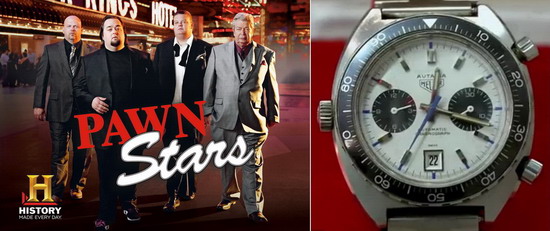
The crew at the shop includes some real characters. Rick Harrison, co-owner of the shop (shown on the left), seems to know everything about everything. Austin Russell, known as “Chumlee” (second to the left), seems to know nothing about anything, but entertains us with his boorish demeanor. Customers offer items ranging from the usual pawn shop categories – guns, musical instruments and jewelry – to some really weird things, like a Civil War cannon, FBI fingerprints from Saddam Hussein (owner rejected an offer of $1,500) or papers taken from the Pentagon (which turn out to be worthless).
In the February 20, 2014 episode of Pawn Stars, a customer (“Randy”) sought to sell his vintage Heuer Autavia chronograph and negotiated the transaction with Rick. Randy indicated that his father had purchased the watch when it was new, around 1970, and that the watch had been in a drawer for the past 25 years, being worn infrequently.
Here is Randy’s vintage Heuer Autavia, which we describe in further detail below.
This version of the Heuer Autavia is one of the chronographs most popular among today’s collectors. This episode of Pawn Stars was quickly highlighted on our discussion forum and also featured in a posting on Hodinkee.
Rick ended up buying the watch for $8,000, and several people have asked me whether this price was too high, too low or just about right. I thought that it would be fun to present my assessment of the watch, suggesting some of the elements that added to the value of the watch, as well as a couple of points that may have been negatives. We can also point out some of the things that Rick and Randy got right about the watch, as well as a couple of “errors and omissions”.
An Early Version of the “Siffert” Autavia
The Autavia chronograph (manual-wind) was introduced in 1962, with the first automatic Autavias being offered in 1969. There were two basic versions of the early automatic Autavias – one with a black dial (and white registers) and one with a white dial (and black registers). Collectors refer to this white-dialed model as the “Siffert”, as it was the model worn by Swiss Formula One star, Jo Siffert. As with so many of the vintage Heuers, the early models and executions of the Siffert tend to be the most valuable, with later models being produced in higher volumes and also having a higher “survival rate”. The very first model of the “Siffert” Autavia – offered in mid-1969 — is the super rare model that has “Chronomatic” on the dial. We have seen fewer than 20 of these Chronomatic models over the past decade, and they would currently sell above the $30,000 mark.
The model offered by Randy is a very early execution of the “Siffert”, being the first version produced after the “Chronomatics”. Three key features of this early execution are (a) the polished steel hour markers have ridges, (b) the hands are polished steel with luminous inserts, and (c) the hour recorder has the numerals 3-6-9-12. (Later models of the “Siffert” had smooth markers, brushed steel hands and all 12 numerals on the hour recorder.) Here is a reference photo of the early execution of the Siffert Autavia, from Paul Gavin, showing these features. The serial number marked on the case (141963) confirms that this is an early sample.
Baseline for Estimating the Value
In order to estimate the fair market value of Randy’s Autavia, we will start with a “baseline” price, and then consider the elements that will add to the value of the watch. Based on several recent market transactions, we can say that the baseline price for an early “Siffert” would be approximately $7,000. In other words, if it’s this execution, and it runs, it will be worth at least $7,000, even in average condition.
Up, Up and Away!
Several aspects of Randy’s Autavia increase its value above our $7,000 baseline, as follows:
Condition – Although it is difficult to determine the condition of this Autavia based on the video, the watch appears to be in excellent condition. We see no marks on the dial; the hands are bright and clean, and most of the lume dots on the hour markers are in place. Based on this condition, we add $2,000, to get us to $9,000.
Box and Papers – We rarely see a 1970 era Heuer chronograph offered with its original box and warranty booklet, and this adds significant value to Randy’s watch for the collector. Any sample of this red Heuer box can sell for $1,000; similarly, any blank instruction booklet / warranty card can sell for a few hundred.
Because the serial number marked in the booklet matches the serial number marked on the case, we can be confident that these are the original papers that came with this watch. Together, the box and papers would likely add another $2,000 to the value, so we are now at $11,000.
The Icing on the Cake – The Decimal Minutes Bezel
Both Randy and Rick missed the most distinctive element of this watch — the decimal minutes bezel. We begin with a brief explanation.
Rather than showing minutes and seconds (MH) or translating time over a measure distance into miles per hour (Tachymeter), the decimal minutes bezel is marked to show hundredths of minutes. For example, 36 seconds is shown as 60 hundredths of a minute (or 0.60). The use of decimal minutes makes it far easier to perform mathematical operations on the times, as opposed to performing these operations with minutes and seconds. (For example, 10.38 minutes minus 5.80 minutes = 4.58 minutes. This is far easier to work with than saying 10 minutes 23 seconds minus 5 minutes, 48 seconds = 4 minutes, 35 seconds.) Competitive rallies are timed in hundredths of minutes, rather than in seconds.
I would estimate that well over 99% of the automatic Autavias that we have seen from this era have either a bezel marked with a Tachymeter scale (standard for the Sifferts) or a bezel marked for Minutes and Hours (standard for the black-dialed Autavias). In a decade of chasing the Autavias from the early 1970s, we have probably seen only five to ten of these with decimal minutes bezels. We do not know whether these decimals minutes bezels were installed at the factory, or whether a dealer might have switched one out for a customer, or whether it might have come when the watch was serviced later in its life, but we know that (a) these decimal minutes bezels were rare, and (b) they add to the race / rally image of the Autavia.
The scarcity of the decimal minutes bezel, offset by our lack of information about when this bezel would have been installed, make it very difficult to assign a value. But based on the prices that we see any original bezel for the Autavia Reference 1163 and the fact that this is one cool looking bezel suggest that we add at least another $1,000 for this feature, with the chance that someone might pay considerably more for it. Just for fun, we’ll add $1,500 for this bezel, which gets us to $12,500.
A Couple of Questions
We should address a couple of questions that arose during the episode.
What about the missing bracelet? Several times during the negotiations, Rick remarked that the value of the watch was significantly diminished because it was not on its original bracelet. Of course, this is just one technique that he used in trying to buy the watch at a lower price. While the watch would have been worth more on its original bracelet (say, $1,000 to $1,500), the base price that I started with above ($7,000) is for the “head only”, so there is no deduction for the absence of the bracelet.
Why couldn’t Rick get the case open? During the episode, Rick expresses concern about whether the movement is original, and after they have agreed on the price, he goes to his workroom, to remove the case-back and have a look at the movement. We see footage of Rick putting the watch in the case opener, and then we see him returning to the counter, to tell Randy that “We have a problem” because he has been unable to open the case-back. Notice, however, the we never see Rick actually attempting to open the case.
In what must be an attempt to make Randy feel better about the relatively low price that he offers, Rick suggests that this is another “risk” that he is taking in buying the watch. In my humble opinion, this story of Rick being unable to remove the case-back — with this massive, bench-mounted case-opener — is a complete fabrication.
Two points support this conclusion: First, I have never had a screw-back Autavia that I was unable to open, and I am a skinny guy using a small hand-held case-opener. It is unthinkable that Rick (a large man) was unable to open the case, with the (huge) bench-mounted case-opener. Second, when every other element of the watch looks so clean, we can assume that the case will also be in tip-top shape. It’s hard to imagine that there could be issues with the back of the watch, when the rest of the watch looks so pristine. So there’s no gain or loss in value here, and certainly no “risk” being taken by Rick . . . this is simply a buyer using a bit of deception to beat down the seller, a little drama for the television audience.
The Bidding
Randy opened with an asking price of $12,000; Rick countered at $7,000; Randy asked for $10,000; Rick went to $8,000, and after a couple of additional asks from Rick, they struck the deal at $8,000.
It’s a bit ironic that Randy started with an “ask” ($12,000) that I believe is reasonably close to the fair market value; and Rick started with a “bid” at the absolute bottom dollar (i.e., any early Siffert that is ticking will bring $7,000). They ended at $8,000, which seems well below the real market value, but maybe OK as a wholesale price for a quick sale.
The Bottom Line
In estimating the value of this watch, we have started with a baseline price of $7,000, and then increased this price based on the individual elements of the watch – (a) condition, (b) box and papers and (c) bezel – and ended up at $12,500. But a watch is sometimes worth more than the sum of its parts, and when I look at this watch, I believe that it would fetch a higher price an open market sale. This $12,500 represents a floor (or minimum) price, and I believe that this watch might sell for up to $14,000. We just don’t see many of these early automatic Autavias in the hands of the first owner, in the original box, with the matching original papers, and the decimal minutes bezel is a kicker that could lead to some strong bidding by collectors who just want to own this watch.
My bottom line estimate for this old Autavia — $12,000 to $14,000, well above the $8,000 that Rick payed to buy it from Randy.
Jeff Stein
March 11, 2014


